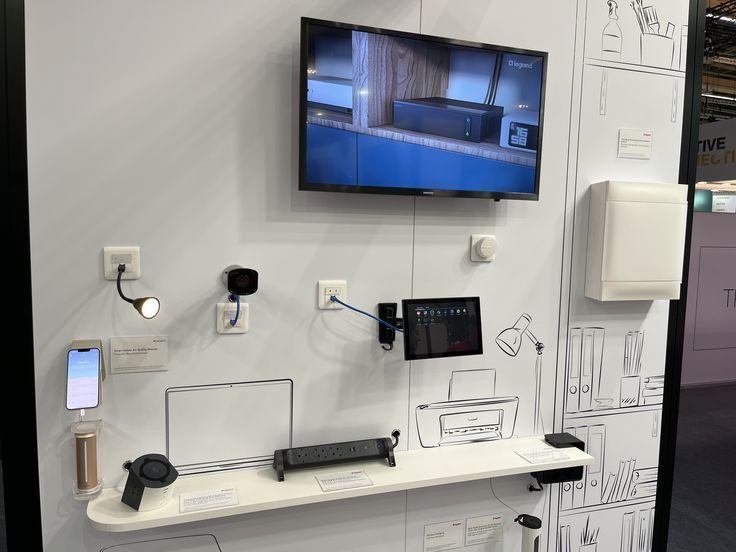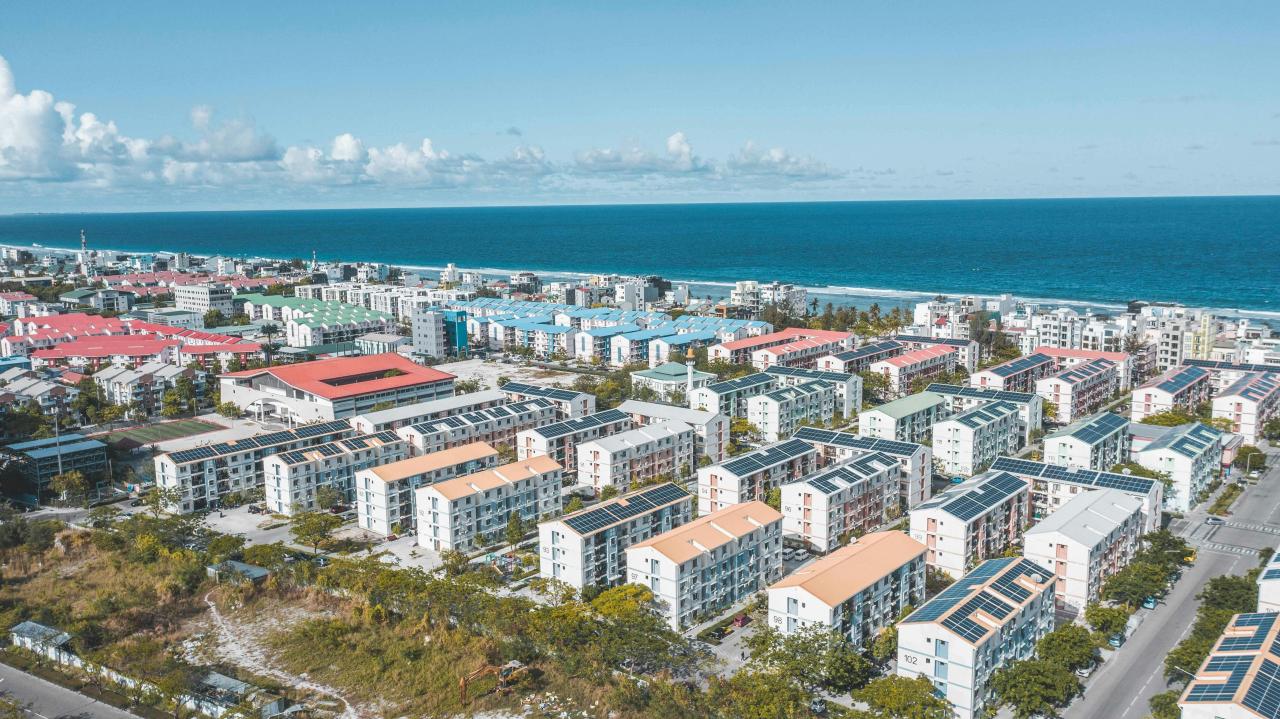In the relentlessly accelerating digital age, the underlying infrastructure that connects everything—from global data centers to individual sensors—is more critical than ever. As data volumes explode, application demands intensify, and the paradigm shifts towards cloud-native and edge computing, the traditional network has evolved into sophisticated network fabrics. These are not merely collections of interconnected devices but intelligent, programmable, and highly efficient systems designed to deliver ultra-high-performance connectivity. Understanding the trends shaping these fabrics is paramount for architects and engineers building the digital backbone of tomorrow, ensuring that performance and reliability are not just features, but inherent characteristics of modern connectivity.
The Evolution of Networks: From Static to Dynamic Fabrics
To truly grasp the significance of contemporary network fabrics, it’s essential to contextualize their evolution from simpler, more rigid predecessors. The journey reflects a continuous pursuit of greater speed, flexibility, and automation.
A. The Era of Traditional Networks: Static and Manual
For decades, network infrastructure was characterized by a more static and labor-intensive approach. Network engineers would manually configure switches, routers, and firewalls, often device by device. This method, while functional for smaller, less dynamic environments, presented significant limitations as demands grew.
- Manual Configuration and Human Error: Every change, from adding a new VLAN to configuring a routing protocol, required direct human intervention. This was not only time-consuming but also highly susceptible to errors, leading to misconfigurations, downtime, and security vulnerabilities. Configuration drift across devices was a constant challenge.
- Limited Scalability and Agility: Scaling a traditional network involved physically adding and configuring new hardware, a process that could take days or weeks. This lack of agility made it difficult to respond quickly to surges in traffic or the rapid deployment of new applications. Businesses struggled to adapt to changing market conditions.
- Vendor Lock-in and Proprietary Solutions: Networks were often built with proprietary hardware and software from single vendors. This led to vendor lock-in, limiting choices, stifling innovation, and making interoperability between different vendors’ equipment challenging, increasing overall cost and complexity.
- Difficult Troubleshooting: Diagnosing issues in large, manually configured networks was a laborious process. The lack of centralized visibility and automated diagnostics meant engineers often had to trace problems hop by hop, leading to extended mean time to recovery (MTTR).
- Inefficient Resource Utilization: Fixed allocations of bandwidth and resources, often based on peak capacity planning, led to inefficient utilization during off-peak times. Dynamic adjustment of resources was virtually impossible.
B. The Dawn of Software-Defined and Fabric-Based Networks
The emergence of network virtualization and software-defined networking (SDN) marked a pivotal shift, laying the groundwork for modern network fabrics. The focus moved from individual boxes to centralized control and automation.
- Software-Defined Networking (SDN): SDN decouples the control plane (which dictates network behavior) from the data plane (which forwards traffic). A centralized controller manages the entire network, allowing for programmatic control and automation. This was a critical step towards treating the network as a single, programmable entity rather than a collection of disparate devices.
- Network Function Virtualization (NFV): NFV virtualizes network services (like firewalls, load balancers, and VPNs) that traditionally ran on dedicated hardware. These virtualized network functions (VNFs) can run on standard servers, offering greater flexibility, faster deployment, and reduced hardware costs.
- Fabric-Based Architectures: Building upon SDN and NFV, network fabrics abstract the underlying physical network into a single, unified, and programmable entity. They are designed with intelligence, automation, and multi-path capabilities to deliver high performance, consistent policies, and simplified operations across diverse environments (data centers, clouds, edge).
This evolution signifies a move towards networks that are dynamic, self-optimizing, and tightly integrated with application demands, rather than being a static infrastructure layer.
Core Characteristics of High-Performance Network Fabrics
Modern network fabrics are defined by a set of distinguishing characteristics that enable them to meet the rigorous demands of contemporary digital environments.
A. Centralized Control and Automation
At the heart of network fabrics lies a centralized control plane that enables automation and programmatic management.
- Single Pane of Glass Management: Instead of configuring individual devices, administrators manage the entire fabric from a central controller or orchestration platform. This simplifies operations and ensures policy consistency.
- Policy-Driven Automation: Network behavior is defined by high-level policies (e.g., “all web servers must be accessible from the internet on port 80/443”). The fabric automatically translates these policies into granular device configurations, significantly reducing manual configuration and human error.
- Intent-Based Networking (IBN): This is an advanced form of automation where the network continuously validates that the network’s current state aligns with the desired business intent. If deviations occur, it attempts to self-correct.
B. Programmability and API-Driven Interfaces
Network fabrics are inherently programmable, exposing APIs (Application Programming Interfaces) that allow external systems and applications to interact with and control network behavior.
- Integration with DevOps Tools: APIs allow network configurations to be managed as code (Network as Code), integrating with CI/CD pipelines, Git repositories, and other DevOps tools.
- Dynamic Resource Allocation: Applications can dynamically request network resources (e.g., bandwidth, specific firewall rules) on demand, enabling agile deployment and scaling of services.
- Custom Automation: Allows for the creation of custom automation scripts and workflows to meet specific operational requirements.
C. High Bandwidth and Low Latency
The fundamental requirement for any high-performance network is ample bandwidth and minimal latency. Network fabrics are engineered for this, often leveraging cutting-edge hardware and optimized protocols.
- Higher Port Speeds: Widespread adoption of 100GbE, 400GbE, and beyond, especially in data center interconnects and backbone networks.
- Optimized Topologies: Designs like Clos networks (Leaf-Spine architecture) eliminate bottlenecks and provide predictable low latency and high bandwidth between any two points in the network.
- Traffic Engineering: Intelligent routing and load balancing within the fabric ensure optimal path selection and efficient utilization of available bandwidth.
D. Micro-segmentation for Enhanced Security
Traditional perimeter-based security is insufficient for modern distributed applications. Network fabrics enable micro-segmentation, a granular security approach.
- Workload Isolation: Allows for the creation of very small, isolated network segments, often down to the individual application workload or virtual machine.
- Reduced Attack Surface: Limits the lateral movement of threats within the network, even if a breach occurs, by enforcing strict access policies between segments.
- Policy Enforcement: Security policies are defined and enforced at the network fabric level, automatically applying to workloads regardless of their physical location within the data center or cloud.
E. Resilience and Self-Healing Capabilities
High-performance networks must be highly available and resilient to failures. Network fabrics incorporate features for rapid recovery.
- Redundancy at All Layers: Redundant links, devices, and control plane components to ensure no single point of failure.
- Fast Convergence: Rapid detection of failures and redirection of traffic along alternate paths, minimizing downtime.
- Automated Remediation: Integration with monitoring and orchestration systems to automatically detect and potentially resolve common network issues without human intervention.
- Telemetry and Analytics: Continuous collection of detailed network telemetry for proactive identification of anomalies and predictive maintenance.
F. Multi-Cloud and Hybrid Cloud Enablement
As organizations adopt multi-cloud and hybrid cloud strategies, network fabrics extend their reach to seamlessly connect diverse environments.
- Consistent Policy Enforcement: Applying uniform network and security policies across on-premise data centers, private clouds, and multiple public cloud providers.
- Seamless Connectivity: Providing high-performance, low-latency, and secure connectivity between these disparate environments, making them function as a single, extended network.
- Optimized Traffic Routing: Intelligently routing traffic to the most efficient location, whether it’s within a specific cloud, on-premise, or between clouds.
Key Technologies and Components Driving Network Fabric Trends
The evolution of network fabrics is powered by a confluence of innovative technologies and architectural patterns.
A. Software-Defined Networking (SDN) and Controllers
SDN remains a foundational concept. The SDN controller acts as the central brain of the network fabric, translating high-level policies into low-level forwarding rules for network devices. Examples include Cisco ACI, VMware NSX, Juniper Contrail, and open-source options like OpenDaylight.
B. Network Function Virtualization (NFV)
NFV allows network services to run as software on commodity hardware, offering flexibility and agility. This is crucial for dynamically deploying services like firewalls, load balancers, and VPNs within the fabric without dedicated hardware appliances.
C. Container Networking Interface (CNI)
For cloud-native applications leveraging containers and Kubernetes, the Container Networking Interface (CNI) is critical. CNI provides a standard interface for container runtimes to integrate with network providers, enabling seamless networking for containerized workloads within a fabric. Solutions like Calico, Cilium, and Flannel provide the network overlays and policy enforcement for Kubernetes clusters.
D. Programmable Data Planes (P4, SmartNICs)
The ability to program the network’s data plane (the forwarding logic) is a cutting-edge trend.
- P4 (Programming Protocol-Independent Packet Processors): A domain-specific language that allows developers to specify how network devices should process packets, enabling highly customized and optimized forwarding behaviors directly on the switch silicon or SmartNICs.
- SmartNICs (Network Interface Cards): These are network adapters with built-in processing capabilities (CPUs, FPGAs, ASICs) that can offload network tasks from the main server CPU and run custom networking functions or security policies at line rate. They are essential for high-performance data plane acceleration and security.
E. Network Automation and Orchestration Tools
Beyond SDN controllers, various tools facilitate the automation and orchestration of network fabrics:
- Ansible/Terraform/Puppet/Chef: Used for configuring network devices, managing network infrastructure as code, and automating deployment workflows.
- Custom Scripting: Python, Go, and other languages with network-specific libraries for bespoke automation.
- Orchestration Platforms: Tools that manage the lifecycle of network services across heterogeneous environments, often integrating with cloud platforms and virtualization layers.
F. Advanced Telemetry and Analytics
The sheer volume of data traversing network fabrics necessitates advanced telemetry and analytics capabilities.
- Streaming Telemetry: Devices continuously stream detailed performance and operational data (e.g., interface statistics, flow data, CPU utilization) in real-time, providing far richer and more granular insights than traditional polling methods.
- AI/ML for Network Operations (AIOps): Leveraging artificial intelligence and machine learning to analyze massive volumes of network data, detect anomalies, predict failures, and even automate remediation, transforming traditional network operations into a proactive and intelligent system.
- Digital Twins of the Network: Creating a virtual replica of the physical network that continuously synchronizes with the real network’s state. This digital twin can be used for simulations, troubleshooting, and testing changes without impacting the live environment.
G. Secure Access Service Edge (SASE)
SASE is a convergence of wide area networking (WAN) and network security services into a single, cloud-delivered service model. It enables secure access for distributed workforces and applications, optimizing performance and security regardless of user location or the location of the accessed resources. It consolidates technologies like SD-WAN, Firewall as a Service (FWaaS), Secure Web Gateway (SWG), and Zero Trust Network Access (ZTNA).
Designing with Network Fabrics: Architectural Considerations
Building high-performance systems with network fabrics requires specific architectural considerations that go beyond traditional network design.
A. Spine-and-Leaf Architecture (Clos Network)
This is the dominant physical topology for modern data center network fabrics.
- Spine Layer: A set of high-capacity switches that act as the core, connecting all leaf switches.
- Leaf Layer: Switches that connect directly to servers (and sometimes other network devices).
- Benefits: Provides high bandwidth, low and predictable latency between any two points, and excellent scalability through the addition of more spine and leaf switches. It eliminates traditional three-tier network bottlenecks.
B. Overlay Networking (VXLAN, Geneve)
To support logical network segmentation and multi-tenancy on top of a physical fabric, overlay networking protocols are essential.
- VXLAN (Virtual Extensible LAN): The most common overlay protocol, it encapsulates Layer 2 Ethernet frames in UDP packets, allowing logical Layer 2 networks to span across large Layer 3 networks. This enables highly flexible and scalable virtual networks for different tenants or applications without being constrained by the physical underlay.
- Geneve: A newer, more flexible overlay protocol designed to be extensible, allowing for the inclusion of metadata for richer network functions and telemetry.
These overlays enable micro-segmentation and multi-tenancy within the fabric.
C. Network as Code (NaC) and CI/CD for Networks
Just like Infrastructure as Code, Network as Code (NaC) applies software development principles to network management.
- Version Control: Network configurations are stored in Git, enabling traceability, collaboration, and easy rollbacks.
- Automated Provisioning: Changes are pushed through CI/CD pipelines, automatically updating network configurations or deploying new network services. This ensures consistency and reduces manual errors.
- Automated Testing: Network changes are tested in simulated or isolated environments before deployment to production, reducing risk.
D. Zero Trust Network Principles
Applying Zero Trust principles to network fabrics means:
- Never Trust, Always Verify: Every user, device, and application attempting to access network resources must be authenticated and authorized, regardless of whether they are inside or outside the traditional network perimeter.
- Micro-segmentation: Crucial for isolating workloads and limiting lateral movement of threats within the fabric.
- Least Privilege Access: Granting network access only to the specific resources and operations that are absolutely necessary.
E. Multi-Cloud and Hybrid Cloud Connectivity Patterns
Designing for connectivity across disparate environments requires specific patterns:
- Direct Connects/Interconnects: Dedicated private connections between on-premise data centers and cloud providers for high bandwidth and low latency.
- Software-Defined WAN (SD-WAN): Optimizing and securing connectivity for branch offices to cloud resources.
- Cloud Native Network Services: Leveraging cloud provider’s native networking services (e.g., VPC Peering, Transit Gateway, Azure Virtual WAN, Google Cloud Network Connectivity Center) to connect different cloud networks or regions efficiently.
- Network Virtual Appliances (NVAs): Deploying virtualized firewalls, load balancers, or VPN gateways as appliances within the cloud environment.
F. Observability-Driven Network Operations
Shift from simple monitoring to full observability.
- High-Granularity Telemetry: Collecting detailed flow data, packet loss, latency, and application-specific network metrics.
- Unified Dashboards: Creating consolidated dashboards that provide real-time insights into network performance, health, and security across the entire fabric.
- AIOps Integration: Feeding network telemetry into AI/ML platforms for anomaly detection, root cause analysis, and predictive maintenance. This enables proactive management and reduces the need for manual troubleshooting.
The Future Trajectory of Network Fabrics
The evolution of network fabrics is far from complete. Several exciting trends and innovations are poised to further reshape the landscape of high-performance connectivity.
A. Beyond 400GbE: The Race for Higher Bandwidth
The demand for bandwidth will continue to grow exponentially. We can expect the widespread adoption of 800GbE and even 1.6TbE in data center backbones and large-scale enterprise networks. This will require continued innovation in optical technologies, silicon photonics, and network interface cards.
B. Greater AI/ML Integration for Autonomous Networks
The vision of autonomous networks powered by AI and Machine Learning will become more of a reality. AIOps platforms will evolve to not just detect anomalies but also to perform more sophisticated root cause analysis, predict failures with higher accuracy, and even initiate self-healing or optimization actions without human intervention. The network will become truly self-driving.
C. Enhanced Security at the Data Plane
Security will become even more embedded directly into the network data plane. Leveraging technologies like SmartNICs and P4-programmable switches, network fabrics will be able to perform granular policy enforcement, threat detection, and even mitigation at line rate, close to the source of data, rather than relying solely on centralized security appliances. This pushes security to the edge of the network.
D. Quantum Networking: The Next Frontier in Security
While nascent, the long-term future may see the emergence of quantum networking, leveraging quantum entanglement to create fundamentally secure communication channels. This would offer unparalleled levels of privacy and security, particularly for critical infrastructure and sensitive data, although its practical application is still decades away.
E. Ubiquitous Edge Network Fabrics
As computing shifts closer to the data source, edge network fabrics will become pervasive. These will be highly optimized, localized network fabrics designed to handle massive IoT data streams, low-latency AI inference, and real-time processing at the edge of the network, seamlessly integrating with larger cloud-based fabrics.
F. Open and Disaggregated Networking
The trend towards open networking and disaggregation (separating hardware from software, and control plane from data plane) will continue to gain traction. This involves using open-source network operating systems (NOS) on bare-metal switches, fostering greater choice, reducing vendor lock-in, and enabling more rapid innovation in network software.
G. Digital Twin Networks for Predictive Operations
The concept of digital twins will become standard for network fabrics. A continuously updated, high-fidelity virtual model of the network will enable architects and operators to simulate changes, predict performance under different loads, diagnose issues in a sandbox environment, and optimize network configurations before deploying them to the live production network, vastly reducing risk.
Conclusion
The evolution of networks into sophisticated network fabrics represents a pivotal moment in the digital infrastructure landscape. Driven by the unrelenting demands of cloud-native applications, exploding data volumes, and the imperative for real-time responsiveness, these fabrics are no longer just conduits for data. They are intelligent, programmable, and highly automated systems that form the high-performance backbone of modern enterprises.
By embracing core principles like centralized control, deep programmability, micro-segmentation, and inherent resilience, and by leveraging cutting-edge technologies from SDN and container networking to SmartNICs and AIOps, organizations can design and operate connectivity that is truly future-proof. While challenges in tooling, skill gaps, and architectural complexity remain, the continuous innovation in this field promises an even more autonomous, secure, and performant networking future. For any business serious about digital transformation, understanding and mastering the trends in network fabrics is not just an advantage—it is an absolute necessity for ensuring seamless, high-performance connectivity in an ever-connected world.














